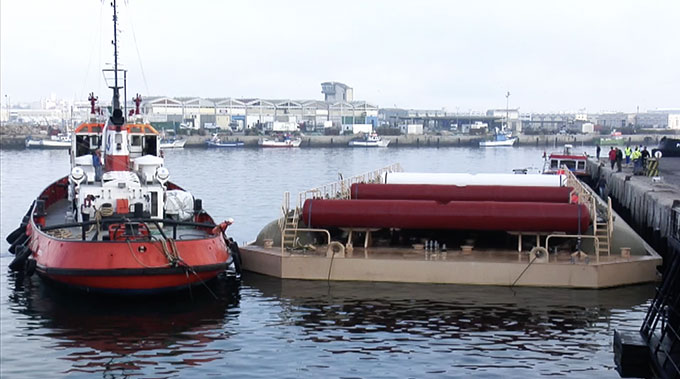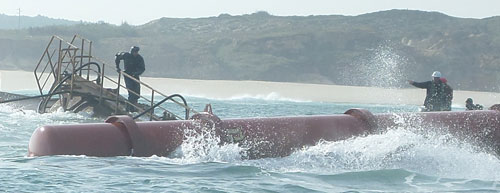Wind turbines and solar panels are a familiar sight, but another renewable energy remains untapped: wave energy. Off the Portuguese coast Finnish start-up AW Energy is turning waves into electricity
It was a eureka moment for professional diver Rauno Koivusaari. In 1993 the Finn was on a diving expedition to a wreck off the Porkkala peninsular in the Gulf of Finland. The powerful motion of the waves, he realized, could be harnessed to generate power. Now Koivusaari’s first commercial-scale WaveRoller energy converter, built by his company AW-Energy, has demonstrated its effectiveness during a two year trial in Peniche, Portugal. “It has taken a long time to get where we are now,” he says. “But I am happy that I pursued the idea in the beginning.”
WaveRoller operates near the shore at depths of 12 to 14 meters, where it captures the sweet spot of the wave surge, while avoiding the most violent storms. AW-Energy estimates that one 350kW WaveRoller could meet the electricity needs of 440 homes in Peniche. With projects initiated in prime near-shore wave-energy areas in Portugal, France, Ireland and Chile, AW-Energy aims to sell more than 50 WaveRoller units in the next four years. The European Investment Bank made a EUR 10 million loan in July to speed up the roll-out of the new technology.
An untapped source of clean energy
The WaveRoller consists of a 18x10 meter steel panel, hinged to a base on the sea bed. The panel moves back-and-forth in the surge, feeding a hydraulic power take-off system with substantial torque. The hydraulic pressure created by the power take-off system drives an electric generator. Electricity enters the onshore grid through a subsea cable and a ground station.
Although the potential of wave energy has long been recognised, the sea’s rough nature held back development of the industry. Technologies have been expensive and vulnerable, while financing has been difficult to find. “Until the EIB came into the picture, there has not been a bank financing,” says Mikael Martikainen, AW’s communications chief. “You could say that wind and solar had a 10 to 20 year head start compared to wave energy.”
Experts believe that waves are the largest untapped resource of clean renewable energy globally, with a potential greater than the capacity of all the installed fossil fuel plants in Europe combined. “It is calculated that wave energy could satisfy at least one tenth of the world's energy needs,” says Martikainen. Because waves are predictable, they would be a valuable complement to other renewable energy sources.

- The WaveRoller wave energy converter before deployment in Peniche in 2012
Environmentally friendly and cost-effective
The WaveRoller demonstration was installed in a protected sanctuary, which AW says is proof of its low environmental footprint. The emission-free WaveRoller has a low visual impact as most of the device is submerged. AW-Energy also monitored sediment movement and subsea noise levels. “The device moves with the water and thus it is not dangerous to animal life,” says Martikainen. “On the contrary, it has been observed in Portugal that the device forms an artificial reef attracting fish and other maritime life.”
Certification as a significant milestone
After dealing with waves of more than eight meters in height, the WaveRoller was awarded the first Technology Qualification Certificate in the field of ocean energy by Lloyd’s Register, a risk and technical consultancy. “Once certified, it is easier and more feasible from the cost perspective to insure projects,” says Martikainen. “With available insurances and a credible track record it is possible to access bank financing.”
With costs in mind, maintenance of the WaveRoller is relatively simple. The units carry large ballast tanks that are filled with air so they can be floated to their deployment locations. Then they are flooded with water to submerge the unit. Although the wave energy converter remains fully submerged during regular operation, it can be re-floated for maintenance by emptying the ballast tanks. There is consequently no need for maintenance by complex, costly and potentially hazardous diving operations. That’s even more good news for the diver who invented it.

- The WaveRoller demo project ended in 2014 making way for a 350 kW commercial installation on the same site in 2017
